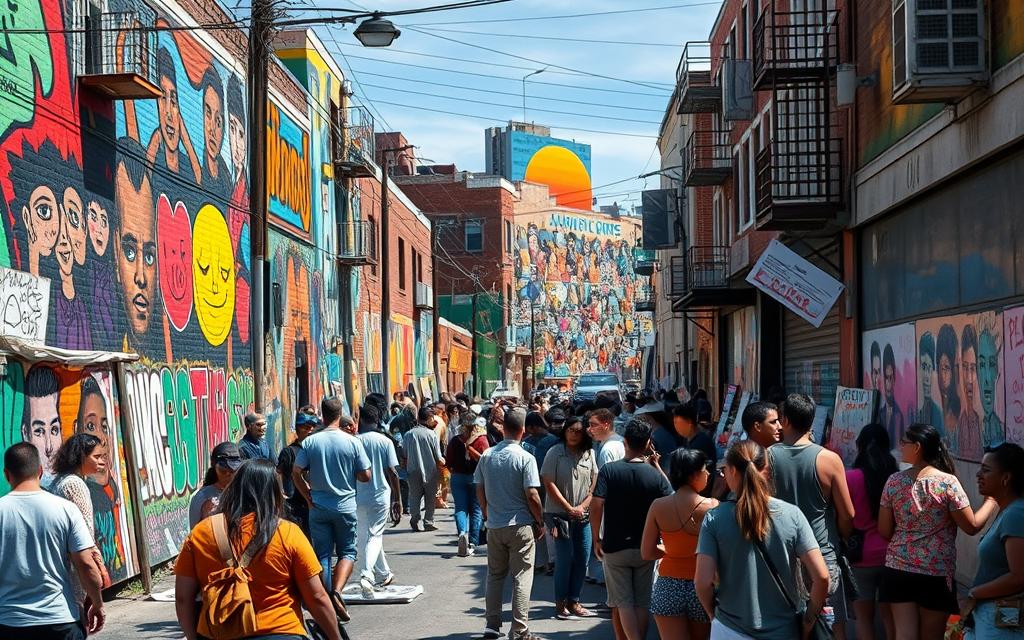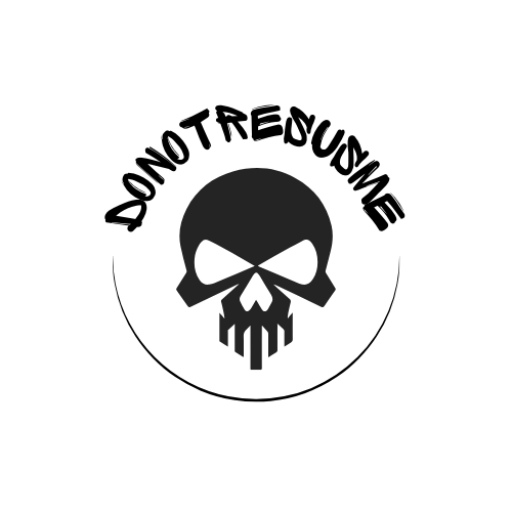Did you know that over 80% of EU citizens see fake news as a big problem for their country and democracy? This fact shows how much media manipulation and political influence shape our views. I’m deeply worried about the increase in disinformation tactics and their impact on us.
This article will look at different types of propaganda, like misinformation and malinformation. We’ll see how they’ve been used in history and today. We’ll also talk about cognitive biases that make us open to these ideological narratives. Plus, we’ll discuss how to fight social engineering and control over public perception. By the end, you’ll know more about dealing with today’s media.
Understanding the Different Forms of Propaganda
I’ve always been intrigued by how information, intention, and impact interact. The terms “propaganda,” “misinformation,” and “fake news” often get mixed up. It’s key to see the differences between them. Let’s look at the various types of propaganda that shape our views.
Misinformation: When Good Intentions Go Awry
Misinformation is sharing false info without meaning to. It happens when people spread wrong data or claims by mistake. This can be due to not checking facts, using bad sources, or misunderstanding information. Misinformation might not be on purpose, but it can still affect how we see things and make choices.
Disinformation: The Insidious Side of Propaganda
On the other hand, disinformation is spreading false info on purpose to harm. This is propaganda at its core, where people or groups make or twist data to push an agenda. Disinformation aims to confuse, break trust, and shape opinions in a certain way.
Malinformation: When Truth Becomes a Weapon
Malinformation is the most complex type of propaganda. It’s about sharing true info but with the goal of causing harm. This could be by revealing personal details, using someone’s weaknesses, or picking facts to tell a certain story. Malinformation uses truth to hurt, discredit, or control others.
Knowing about misinformation, disinformation, and malinformation is key in today’s info-rich world. By understanding these terms, we can spot and fight against harmful info that shapes our lives in big and small ways.
The Historical Use of Propaganda in Wartime
Propaganda has been a key tool for warring sides throughout history. From ancient times to now, it has shaped the outcomes of conflicts by manipulating public opinion. Adolf Hitler, in his book Mein Kampf, dedicated a section to wartime propaganda.
Hitler named Dr. Joseph Goebbels as the “National Propaganda Leader” during the Nazi regime. Goebbels saw propaganda as a way to unite the German people. His campaigns were key in shaping public opinion and support for the Nazis.
“Propaganda is a truly terrible weapon in the hands of an expert.”
Historical and wartime propaganda are key parts of psychological warfare. They aim to change public opinion by spreading false info or making up evidence. This can deeply affect the outcome of a conflict.
| Era | Propaganda Techniques | Impact on Public Opinion |
|---|---|---|
| Ancient Times |
|
|
| World War II |
|
|
The use of propaganda in wartime shows how powerful information can be. It reminds us to be careful with propaganda today. We must stay alert to its dangers and think critically about the news.
The Rise of Rewired Propaganda in the Digital Age
In today’s fast-changing world, rewired propaganda has become a big deal. It changes how we see and use the internet. The internet now challenges authority and disrupts state stories more than before. This has led to a new kind of digital propaganda. It uses smart tricks to change what people think and feel.
Computational Propaganda and Manipulation of Information
At the core of rewired propaganda is computational propaganda. This method uses technology to spread and boost certain messages. It makes fake identities and uses bots to spread and boost these stories. The aim is to shape what people talk about and make them feel more strongly about it.
Fabrication of Evidence: Deep Fakes and Shallow Fakes
Deep fakes and shallow fakes have made things harder with information manipulation. These technologies can make fake evidence look real. This is a big problem because it lets people spread false stories. It also makes us question what we believe is true.
| Propaganda Tactic | Description | Impact |
|---|---|---|
| Computational Propaganda | Leveraging technology to disseminate and amplify content through fake identities and bots | Shapes discourse, increases emotional sentiment, and influences public opinion |
| Deep Fakes and Shallow Fakes | Human image synthesis technologies that enable the fabrication of evidence | Blurs the line between genuine and false narratives, undermining trust in information |
“The digital age has ushered in a new era of rewired propaganda, where the manipulation of information and the creation of false evidence have become powerful tools in shaping our collective realities.”
How Does Propaganda Shape Our Realities

As a professional copywriting journalist, I’ve seen how propaganda deeply affects our views of reality. It’s a powerful tool that uses psychological tricks and misleading info to change what we believe and do. This can make it hard to know what’s real and what’s not.
Propaganda uses our biases to shape our views. It feeds us info that confirms what we already believe. This makes us more likely to accept certain ideas and ignore others. It creates a world where we’re cut off from different opinions and easy prey for propaganda.
“Propaganda is the art of persuading people to think and act in a way that benefits the propagandist.”
Now, with digital media, propaganda’s reach is huge. Social media and online spaces spread false info fast. This can make people more divided, hurt democracy, and lower trust in leaders.
To fight propaganda, we need to understand how it works and its effects. Learning to critically evaluate info helps us make better choices. This way, we can see the world as it really is, not just as propaganda shows it.
| Propaganda Tactic | Description | Examples |
|---|---|---|
| Emotional Appeals | Leveraging strong emotions to influence beliefs and actions | Patriotic appeals, fear-mongering, scapegoating |
| Repetition | Repeatedly reinforcing the same message to increase its perceived validity | Slogans, catchphrases, constant news coverage |
| Selective Presentation | Highlighting or omitting information to shape a desired narrative | Cherry-picking data, focusing on anecdotal evidence, ignoring counterarguments |
The Impact of Propaganda on Public Opinion
Propaganda is a strong tool that can change what people think and affect political results. It can even change the course of wars. By carefully handling information and stories, those who spread propaganda can change how people see events, issues, and policies. This makes people more likely to support or oppose certain actions.
Propaganda as a Weapon in Swaying Public Support
History shows us how propaganda has been used to get people on board, especially during wars. A famous example is Hitler’s propaganda in World War II. It made the German people see their enemies as threats and supported the Nazi regime. Propaganda uses our natural biases and feelings to influence what we think and do.
| Propaganda Technique | Description | Example |
|---|---|---|
| Scapegoating | Blaming a specific group or individual for societal problems | Blaming immigrants for economic woes |
| Bandwagon | Persuading people to join a movement because “everyone else is doing it” | Portraying a political candidate as a sure winner to attract more supporters |
| Glittering Generalities | Using vague, positive-sounding language to promote a cause or idea | Claiming a policy will “make the country great again” |
Propaganda’s strength comes from its ability to change how people see things and support political goals. By controlling the story and handling information, those who spread propaganda can deeply affect public opinion, political influence, and war support.
Participatory Propaganda and Its Divisive Effects

Propaganda has changed from just shaping opinions to manipulating our relationships and social ties. This “participatory propaganda” makes conflicts a normal part of our lives. It breaks down alliances and isolates people, making them easier to manipulate.
This propaganda can deeply affect how we connect with others. When people divide along political lines, they start to distrust their friends and groups. This relationship manipulation and isolation lead to more social division, weakening our communities.
Breaking Connections, Dividing Communities
Participatory propaganda works by breaking down our connections. It uses our natural desire for group identity to make us see our neighbors as enemies. This participatory propaganda makes us pick sides, taking away the complexity that keeps our society strong.
“Participatory propaganda doesn’t just change opinions – it changes how we relate to one another.”
As we become more isolated and distrustful, we’re easier to manipulate. This cycle of social division and isolation is what participatory propaganda is all about. It’s causing our communities to become more polarized.
To fight this threat, we need to reconnect and rebuild the bridges that have been broken. Standing together, committed to truth and understanding, is the only way to beat the divisive forces of participatory propaganda.
Combating Propaganda Through Media and Information Literacy
In today’s world, propaganda and misinformation can easily shape what we believe. The key to fighting these issues is giving people strong media and information literacy skills. As teachers, we play a key role in teaching students how to think critically about the media they consume.
The Role of Schools in Empowering Critical Thinking
Schools should lead in teaching media literacy. They should teach students how to check sources, spot biases, and know what’s true and what’s not. By adding these skills to the curriculum, we prepare the next generation to handle information wisely. This protects them from propaganda’s tricks.
Initiatives for Promoting Media Literacy
There are also efforts outside the classroom to boost media literacy. These include working with media groups and community programs. They aim to make the complex world of information clearer. They give people the tools to be smart, critical users of media.
By focusing on media literacy and critical thinking in education and society, we can protect our democracy. We must win this fight for the integrity of our shared truths.
| Initiative | Description | Impact |
|---|---|---|
| Digital Citizenship Program | A comprehensive program that teaches students how to navigate the digital world safely and responsibly, with a focus on identifying and resisting online manipulation. | Improved ability to recognize and resist propaganda, better online behavior, and increased digital literacy among participants. |
| Media Literacy Awareness Campaign | A public awareness campaign that educates the broader community on the importance of media literacy, providing resources and strategies for critically evaluating information. | Increased public awareness and engagement with media literacy, leading to more informed and discerning consumers of information. |
| Fact-Checking Workshops | Interactive workshops that teach participants how to identify and verify the accuracy of online content, using reputable fact-checking tools and techniques. | Enhanced ability to detect and counteract the spread of misinformation and disinformation, promoting a more informed and discerning public. |
“The best defense against propaganda is an informed and critical citizenry. By empowering individuals with media literacy skills, we can safeguard our democracies and ensure that our shared realities are grounded in truth.”
Conclusion
Our journey into propaganda and its effects on our lives has been quite a ride. We’ve seen how propaganda has been used in history and today, shaping our beliefs and actions. It’s been a deep dive into how propaganda works.
But don’t worry, we can fight back against propaganda. We just need to focus on media literacy, critical thinking, and being good digital citizens. These skills help us deal with the tricky world of information and protect our shared truths.
Let’s take an active part in making our society more informed and engaged. By learning about information literacy and improving our critical thinking, we can see past propaganda’s tricks. This way, we can build a future that’s open, fair, and democratic. We have the power to shape our reality, and it’s time to use it with strong digital citizenship.

